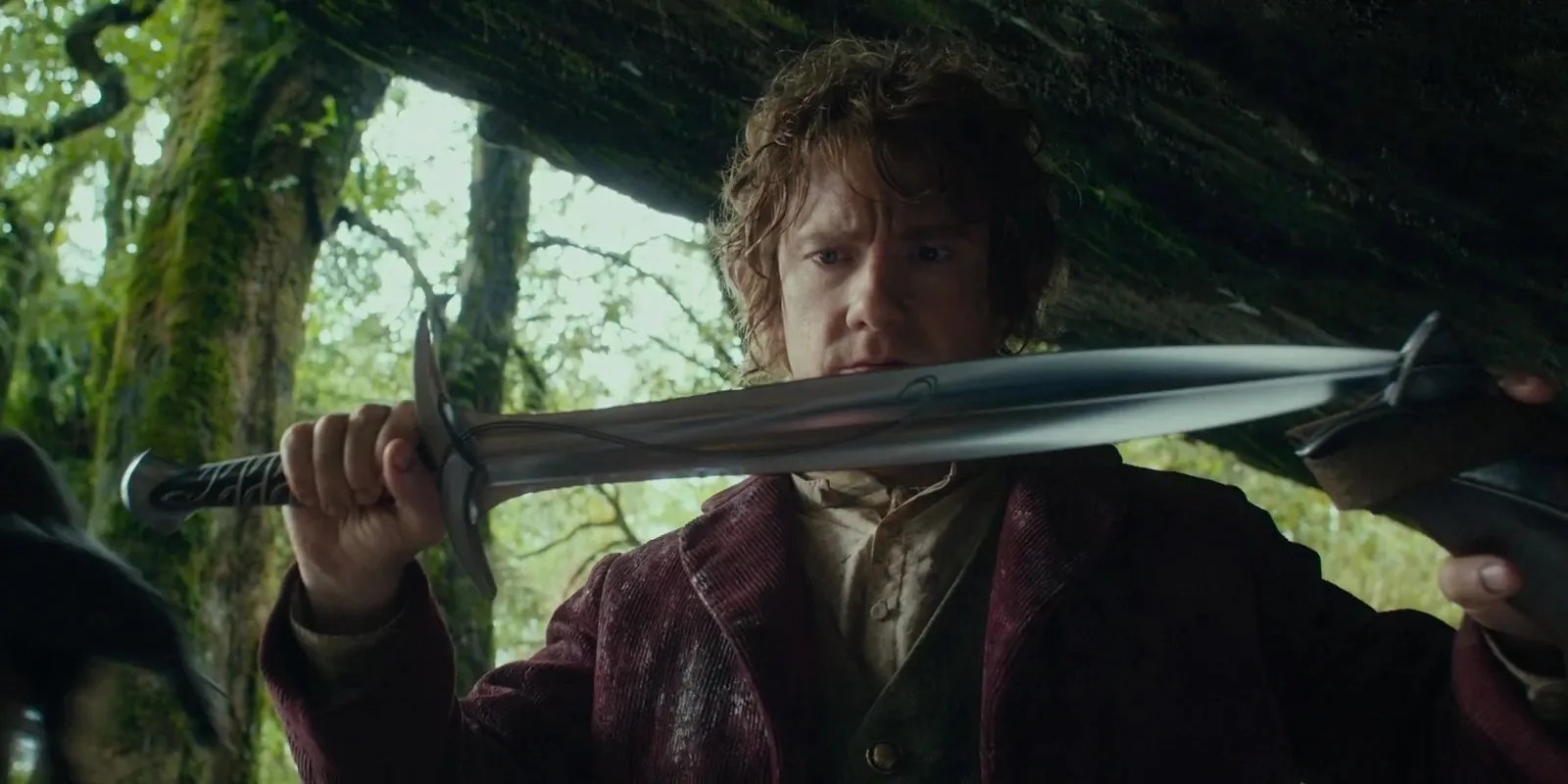Summary
With its simple leather sheath, the undersized Sting was often overlooked as a powerful artifact. It was nothing more than a dagger for the Elves or a pocket knife for the Trolls — but it turned out to be an apt weapon for a Hobbit. There is no description of Sting given inThe Hobbitas such, and it is depicted in the film adaptations as a sort of leaf-shaped blade, with a spiral design and curving edges. InThe Lord of the Rings, there are Sindarin letters engraved on its cross guard, which translate to: “Sting is my name; I am the spider’s bane.”
Despite its humble beginnings, Sting ended up playing a major role in bothThe HobbitandThe Lord of the Rings. However, it also featured in the history of Middle-earth much before that.

RELATED:LOTR: What Makes Aragorn’s Sword Andúril So Special?
Where Did Bilbo Find Sting?
Bilbo discovered Sting quite early on duringthe Quest of Erebor, in TA 2941. When Thorin and Company ran into a few Trolls (named Bert, Tom and William) in eastern Eriador, Gandalf swooped in to save them. In the ensuing fight, William accidentally dropped the key to the Trolls’ cave, which Bilbo managed to recover. Afterward, Gandalf, Bilbo and the Dwarves claimed the entire treasure in the cave, which included several Elven blades. There were two particularly impressive swords with fine scabbards and jeweled hilts:Glamdring (also called Beater), which Gandalf took for himself, andOrcrist (known as Goblin-cleaver or Biter), which went to Thorin II Oakenshield. Along with these, there was the seemingly unremarkable Sting (although it did not have a name at that time), which Bilbo claimed.
Just like Glamdring and Orcrist, Sting “shone with a cold light, if any Orcs were near at hand”, thus alerting the owner of the enemy’s presence in the vicinity. However, Sting was the only sword out of the three that was described as having a blue glow at its edges (“It flashed and glittered like a blue flame”). The Orcs also developed an instinctive fear of such weapons over time. Both Bilbo and Frodo used this to their advantage, such as when the former used Sting’s glow to guide him when he got lost in the Misty Mountains, or when the Fellowship encountered Orcs in the mines of Moria.

Bilbo did not name his sword until he used it to free himself and his companions from the webs of the giant spiders of Mirkwood. After slaying his attacker, he said, “I will give you a name, and I will call you Sting.” The blade also proved to be effective in keeping Gollum at bay when the Hobbit met him as he was, after years of being under the One Ring’s influence, quite fearful of Elven weapons.
When Bilbo returned to the Shire in TA 2942, he displayed the Sting above the mantelpiece before taking it with him to Rivendell in TA 3001. He handed it to Frodo (along with his Mithril-coat) in TA 3018, when the Fellowship arrived at Rivendell: “This is Sting. Take it, if you like. I shan’t want it again, I expect.” During the Battle of the Chamber of Mazarbul, Frodo wounded a troll with Sting when Boromir’s sword failed to do so. He also used it to subdue Gollum when he and Sam confronted him in the Emyn Muil. Later, when Sam was unable to cut through Shelob’s webs with his blade in Cirith Ungol, Frodo sliced through them with Sting. Even after Frodo was paralyzed by Shelob, Sam used Sting and the Phial of Galadriel to stab the spider andforce her to retreat.
It is unknown whether Frodo took Sting with him whenhe departed for the Undying Landsafter Sauron was defeated, or whether he left it to Samalong with the Red Book.
Where Did Bilbo’s Sword Come From?
When Thorin and Company went to Rivendell, the swords were shown to Lord Elrond, who told them, “These are not troll-make. They are old swords, very old swords of the High Elves of the West […] They were made in Gondolin for the Goblin-wars. They must have come from a dragon’s hoard or goblin plunder, for dragons and goblins destroyed that city many ages ago.” On the other hand, Bilbo kept Sting inside his breeches and did not show it to Elrond as he did not think it was significant. However, the history of Glamdring and Orcrist is most likely linked to Sting’s origins. All swords were still sharp and undamaged when they were found, plus they all possessed the same kind of magic.
Glamdring was forged during the First Age for Turgon, the Elven King of Gondolin, whereas Orcrist was possibly owned by Ecthelion, an Elf-lord of Gondolin. Both of them got lost during the Fall of Gondolin. While the maker and original bearer of Sting have not been explicitly stated, the fact that it possessed the same kind of magic as the other two implies that it was the work of Elven smiths as well. It is believed that it may have been first owned by Glorfindel, who was the lord of the House of the Golden Flower in Gondolin and among the mightiest of the Elves. In FA 510, when the forces of Melkor attacked Gondolin, Glorfindel fought valiantly against the enemy and even faced a Balrog (most likelyLungorthin, the second Balrog-lord), which he eventually managed to pierce with Sting. When the Balrog fell from the cliff, it grabbed Glorfindel so that he would die with it. The sword was presumably left stuck in the Balrog’s body and then stolen by the Orcs after the fall of the city, only to be discovered much later in the Third Age.